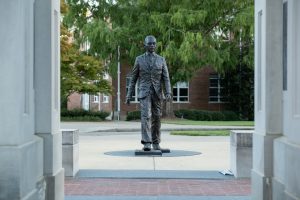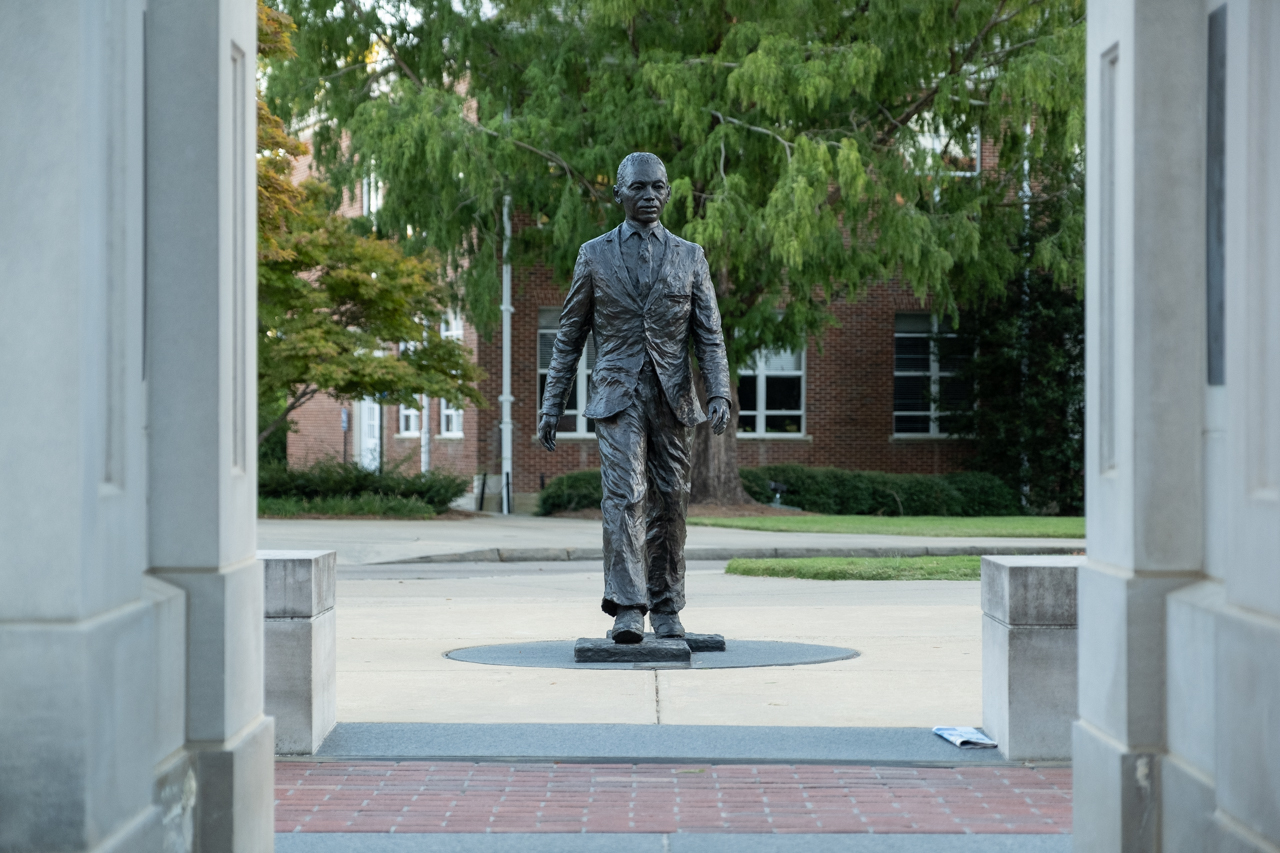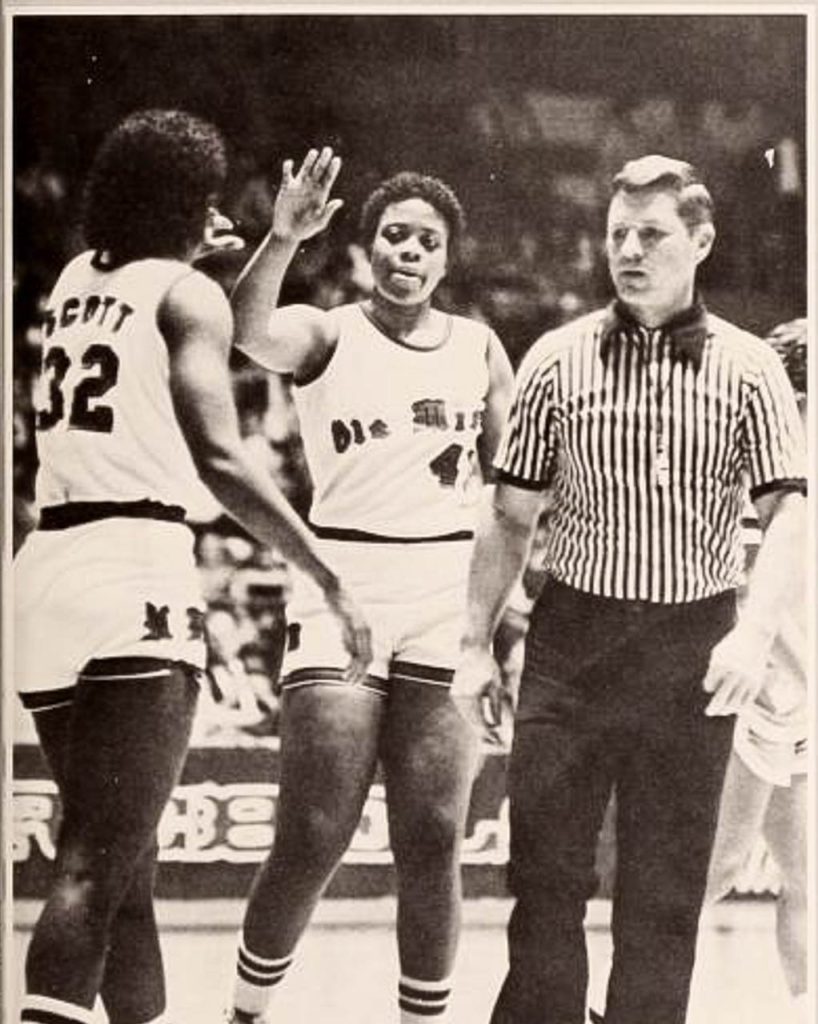
In the ellipse between the Lyceum and the J.D. Williams Library, there is a statue of a man walking purposefully through an archway of courage, commemorating James Meredith, the first African-American student to attend the University of Mississippi.
Much like the event it pays tribute to, the memorial of this historical event has seen its fair share of controversy as well. The statue has been the target of racist vandalism attempts, including an incident in which a (now former) Ole Miss student defaced the statue with a noose.
Attempts of vandalism such as these, as well as others such as the three Ole Miss students who posed with firearms and vandalized a sign that commemorated lynching victim Emmet Till outside Glendora, Miss., serve as an important reminder to reflect upon the history of racial tension at our school to better understand how it affects students today.
The dialogue regarding integration starts with the benchmark Brown v. Board of Education case, in which the United States Supreme Court ruled that segregated schools were not up to the same standard for Black students as they were for white students, a violation of the Equal Protection Clause in the Fourteenth Amendment of the Constitution.
As a result, a national conversation regarding the integration of schools from the elementary level to the collegiate level began, and nowhere was it met with more hostility than in the Deep South. Aside from the famous Little Rock Nine incident, in which President Dwight D. Eisenhower had to deploy federal troops to facilitate the integration of a high school in Little Rock, Ark., riots broke out at the University of Georgia in 1961 and students at the University of Alabama faced resistance from Gov. George Wallace himself in 1963.
With integration in the South drawing national attention, the University of Mississippi also began to draw attention regarding the admission of a Black student by the name of James Meredith. Meredith, a veteran of the United States Air Force, had repeatedly applied to the university, only to be rejected as a result of racist academic policies.
Eventually, through his persistence and with the help of the National Association for the Advancement of Colored People, he was admitted to the university.
Despite the legal assistance behind him, Meredith’s enrollment sparked incendiary controversy. A backroom deal between U.S. Attorney General Robert Kennedy and Mississippi Gov. Ross Barnett was proposed to have Barnett physically block Meredith until federal marshals pulled their firearms, so as to save face with his white supremacist voter base, but it was ultimately scrapped.
Bickering between the state and federal government inflamed the outrage many whites already felt about Meredith’s admission to the university. Despite the initial plan that Barnett proposed being scrapped to prevent violence, the mob that formed in Oxford was stoked by a speech delivered by Barnett during halftime of the Ole Miss-Kentucky football game on Sept. 29, 1962, in Jackson demanding action be taken on campus by the students, all while federal troops further amassed on campus.
Around 7:30 p.m. on Sunday, Sept. 30, 1962, as Meredith was being escorted by 500 federal marshals to move into his dormitory, skirmishes began to break out across campus. Partially spurred on by former Maj. Gen. Edwin Walker, who was later held on insurrection charges, the mob turned vicious at 9 p.m., exchanging gunfire with the troops.
The riot lasted throughout the night, with sparring and tear gas deployed outside the Lyceum and with a bullet hole still marking its door frame to this day. By the time President Kennedy called in additional troops, more than 300 were injured and two men were killed. One, Paul Guihard, was a French journalist sent to cover the integration. He is the only known journalist to have been killed during the civil rights movement.
Meredith attended his first class at the university on Oct. 1., and federal troops remained in Oxford for nearly 10 months to keep the peace.
Today, along with the symbolic bullet hole that still marks the Lyceum, memorial plaques are placed around the campus to commemorate integration and the riot, including a bench honoring Paul Guihard outside the School of Journalism and New Media.
Today, Ole Miss remains a predominantly white institution, with 75% of the student body being white. However, without the courage of men like Meredith, the school would be a very different place. The legacy of these events must be remembered.















